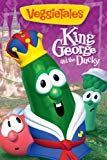R-Rated Scripture
Ammon Defends the Flocks of King Lamoni, courtesy of LDS Media Library
Through a little skit, Mormon children were learning a Book of Mormon story. In the scripture story, a missionary named Ammon gains favor with a king by cutting thieves’ arms off. The young girl portraying Ammon passed a bunch of paper arms to the person playing King Lamoni. “Thank you,” ad-libbed the King. “But I don’t like arms.”
I don’t either, at least, not bloody disembodied arms that have been amputated by force. I don’t like gruesome stories in general, especially those in which the protagonist happens to be the perpetrator. These stories make me squirm even when presented in scripture format. I feel even more antsy when kids are in the room. One night, after family scripture study, I admitted that I hoped the kids hadn’t understood a word of what we had read—it was Nephi’s account of chopping off Laban’s head.
 Such stories aren’t limited to the Book of Mormon. The Bible is another rich source of questionable subject matter. Many of these stories are wisely deleted from children’s lessons—I’ve never heard the Lot family incest story in a Primary setting—but others are kids’ favorites. Consider the battle of Jericho, which features kid-pleasing trumpets, magically toppling walls, and um, genocide. That’s part of the reason that I enjoy sharing Bible stories with my children in Veggie Tales format, where wars are portrayed as pie fights and King David’s voyeurism is directed toward a rubber duckie instead of a bathing woman.
Such stories aren’t limited to the Book of Mormon. The Bible is another rich source of questionable subject matter. Many of these stories are wisely deleted from children’s lessons—I’ve never heard the Lot family incest story in a Primary setting—but others are kids’ favorites. Consider the battle of Jericho, which features kid-pleasing trumpets, magically toppling walls, and um, genocide. That’s part of the reason that I enjoy sharing Bible stories with my children in Veggie Tales format, where wars are portrayed as pie fights and King David’s voyeurism is directed toward a rubber duckie instead of a bathing woman.
Mormon adults are studying the Old Testament in Sunday School this year. As I review these Bible stories with my fellow Mormons, it occurs to me that these stories aren’t necessarily uplifting to adults either. The most common way scriptural text is interpreted in Mormon circles is as an accurate, historical account that also serves as a perfect model for how we should live our lives. With this premise, discussions can delve into why murder or slavery or rape or whatever other objectionable action that particular scripture hero performed was good and right in that particular circumstance. The best explanation derived is usually that the hero’s actions were justified because he was perfectly inspired or perfectly obedient. Unfortunately, a side effect is concluding that immoral behavior can be excused when obeying orders or simply feeling inspired.
For grown-ups, pies and rubber duckies are probably not the solution. (Although personally, I would love to spend Sunday School reviewing Veggie Tales.) But letting go of the compulsion to interpret scripture in a way that mandates such extreme moral relativism could help. Here are some other ways to interpret the text:
1. Read the text as an historical account that is descriptive, not prescriptive. Instead of starting with the assumption that everything a scripture hero did was right, readers can first discuss whether or not it was. Moral lessons can be derived not only from emulating scriptural heroes, but from not repeating their mistakes.
2. Read the text as an historical account that may be flawed and biased because of the limited perspectives of its human writers. Nephi himself admitted that his words were “written in weakness.” (2 Nephi 33:4) Because virtually all scripture was written from a patriarchal viewpoint, feminist theologians often employ this strategy. How would the story have been different if it had been written from someone else’s perspective? Consider the biases that might have led the text’s author to interpret his own story in a certain way and the blind spots that may have prevented him from acknowledging his own errors.
3. Read the text as an allegory. We can derive insights just as well from fictional stories as from true ones, so in this kind of interpretation, historical accuracy is largely irrelevant. Mormons have a great deal of training in this kind of reading; we apply it regularly as we read scriptures that are overtly identified as parables, but several other scripture stories that we traditionally read as if they are history might be more uplifting when viewed from an allegorical perspective (especially considering that the literal historicity of many aspects of these accounts is questionable). Could chopping off those arms be a metaphor for eliminating barriers to serving people of another culture? Could the tumbling walls of Jericho symbolize overcoming our fears?



